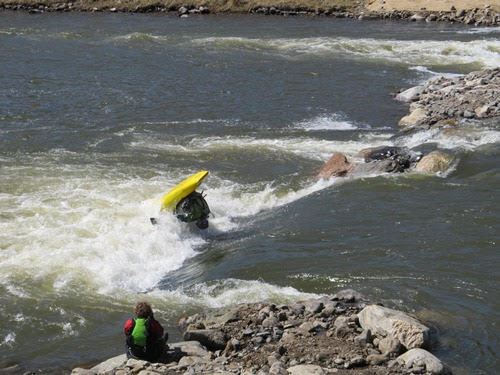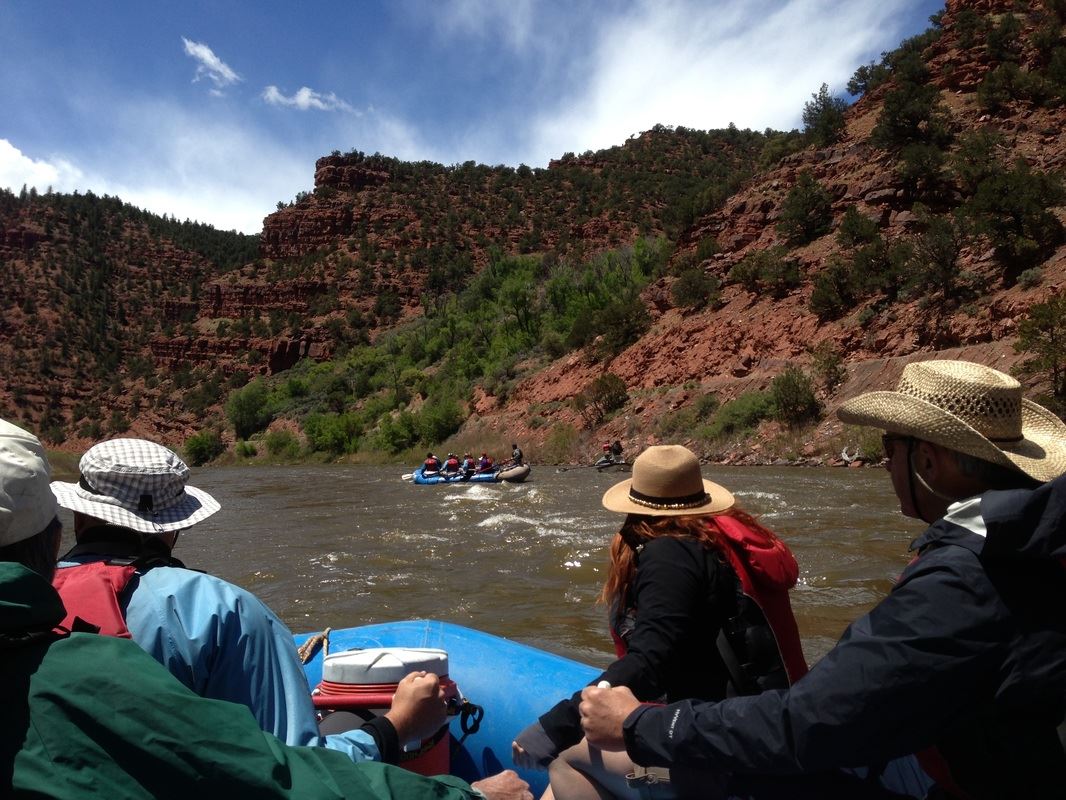 by Tim Friday
by Tim Friday
In 2007, the US Bureau of Land Management (BLM) released a report on the eligibility of rivers in the Upper Colorado River Basin for Wild and Scenic River designation (BLM Eligibility Report, March 2007). This report identified 54.4 miles of the Upper Colorado River from the top of Gore Canyon downstream to a point one mile east of No Name Creek in Glenwood Springs, Colorado (segments 4 through 7), as having numerous “outstandingly remarkable values” eligible for special federal designation as a Wild and Scenic River.
Various state agencies, local governments, environmental and recreational interests, landowners, anglers, and water providers came together as an independent collaborative stakeholder group to develop a local management alternative to Wild and Scenic River designation of the Upper Colorado River with the intention of protecting and perhaps enhancing the outstandingly remarkable values on this part of the Colorado River in ways that coordinate with federal agency management. The Upper Colorado River Wild and Scenic Stakeholder Group is comprised of over 100 individuals representing various state agencies, local governments, environmental and recreational interests, landowners, anglers, and water providers. They have formed an independent, collaborative partnership to develop and implement a local management alternative to Wild and Scenic designation on the Upper Colorado River. Since coming together in 2007, the Stakeholder Group has worked together as a large group and in small work groups to develop a management plan which recognizes the interests of each representative while also protecting and enhancing the Upper Colorado River's outstanding biological, social, and recreational value.
The Stakeholder Group’s Alternative Management Plan was proposed to the BLM as an alternative in the BLM and US Forest Service (USFS) Resource Management Plan revision process. The intention of this collaborative plan is to balance permanent protection of the identified outstandingly remarkable values of these river segments, while still providing flexibility for all water users, certainty for the stakeholders, and yields for water projects. One project that stands out as a benefit to whitewater boaters is the recently completed Gore Canyon Whitewater Park at Pumphouse. This project not only provides a whitewater play park in a gorgeous setting, but it also provides guaranteed flow in the river through a Recreational In-Channel Diversion (RICD) water right. You can read more about RICDs here.
 CW member Steve Dougherty represents CW in the Stakeholders Group and he participated in the January 30, 2017, Upper Colorado River Wild and Scenic Stakeholders Meeting held at the Keystone Center in Keystone, CO. This was his first meeting, and he’s just getting up to speed with the group. At this meeting there was not a lot of discussion of recreational boating issues. The bulk of the meeting focused on the presentation of hydrologic modeling and the use of Denver Water’s Platte and Colorado Simulation Model (PACSM). From a big picture standpoint, what is currently going on is the group has about three years to determine if the current targets for the resources and metrics to measure if the targets are appropriate and if not appropriate, what they should be. If the group cannot agree on revised targets and metrics, then the targets and metrics in the Upper Colorado River Wild and Scenic.
CW member Steve Dougherty represents CW in the Stakeholders Group and he participated in the January 30, 2017, Upper Colorado River Wild and Scenic Stakeholders Meeting held at the Keystone Center in Keystone, CO. This was his first meeting, and he’s just getting up to speed with the group. At this meeting there was not a lot of discussion of recreational boating issues. The bulk of the meeting focused on the presentation of hydrologic modeling and the use of Denver Water’s Platte and Colorado Simulation Model (PACSM). From a big picture standpoint, what is currently going on is the group has about three years to determine if the current targets for the resources and metrics to measure if the targets are appropriate and if not appropriate, what they should be. If the group cannot agree on revised targets and metrics, then the targets and metrics in the Upper Colorado River Wild and Scenic.

